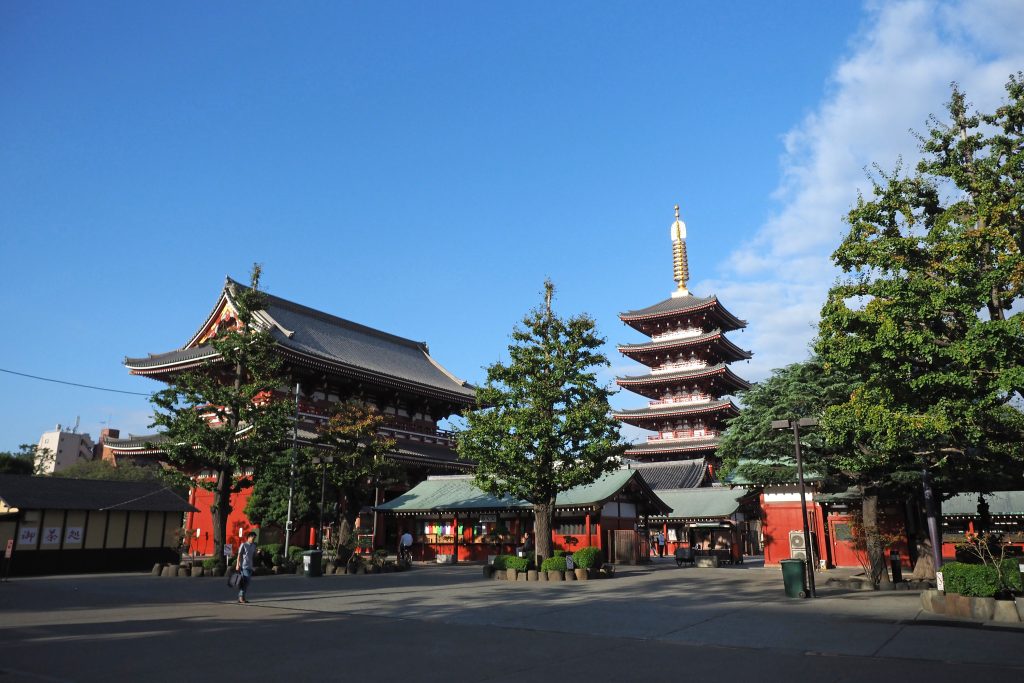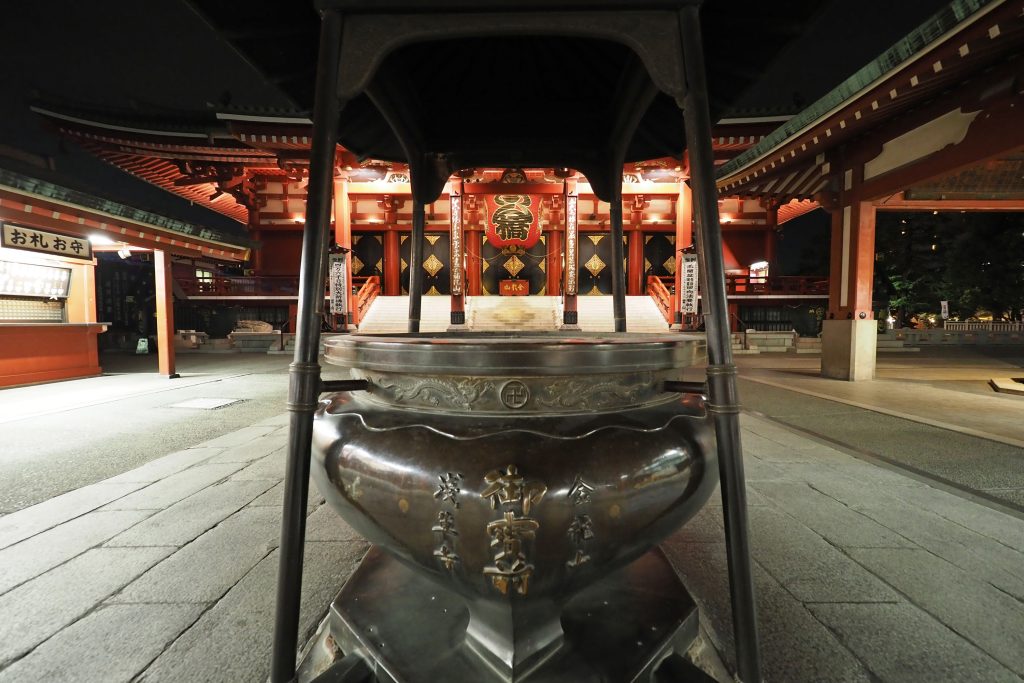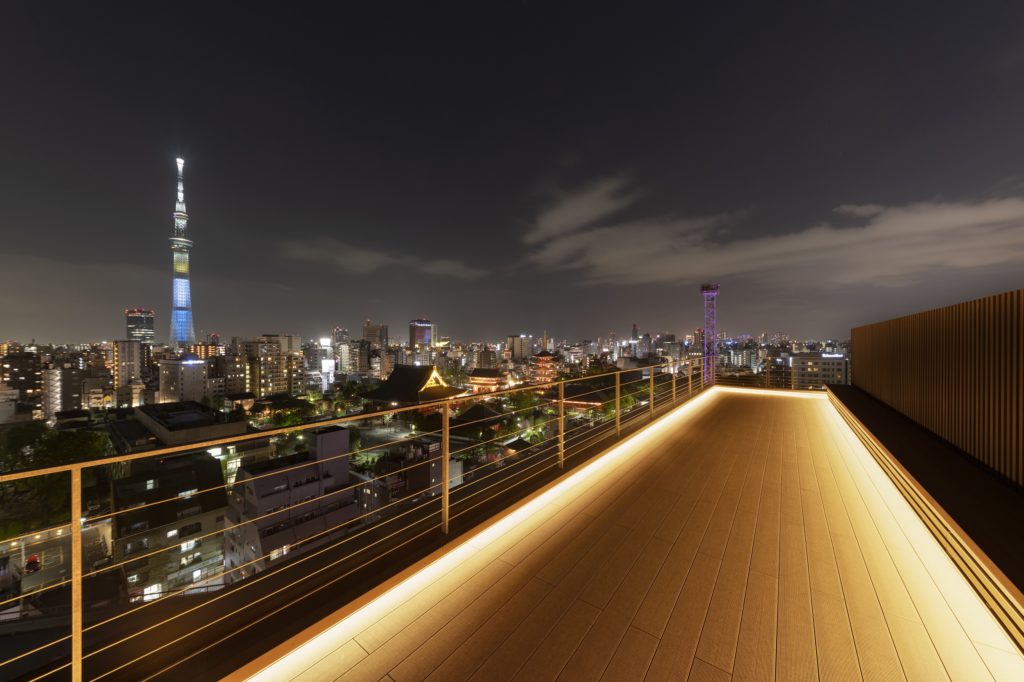
A Guide to Visiting Senso-ji Temple in Asakusa Learn the Proper Way to Worship and Discover Its History
Asakusa is a popular area visited by many tourists, known for its rich history and traditions. Among its many attractions, Senso-ji Temple stands out as the oldest temple in Tokyo, drawing approximately 30 million visitors annually.

This article provides a detailed explanation of the history of Senso-ji, the proper way to worship, how to offer coins, and the meaning of omikuji (fortunes)—important customs and manners every visitor should know.
We’ll also introduce THE KANZASHI TOKYO ASAKUSA, a recommended hotel conveniently located within walking distance of Kaminarimon Gate and Senso-ji Temple, perfect for visitors looking to stay after their visit.
1. History of Senso-ji Temple
Senso-ji was founded in the year 628, making it the oldest temple in Tokyo. According to legend, two brothers fishing in the Sumida River caught a golden statue of Kannon, the Goddess of Mercy, in their net. The local village chief, Hajino Nakatomo (though the name varies in accounts), enshrined the statue, leading to the temple’s founding.
Later, Tokugawa Ieyasu designated it as a guardian temple of Edo (now Tokyo), and during the Edo period, it flourished as a center of popular worship. Today, it is still affectionately known as “Asakusa Kannon” and beloved by many worshippers.
2. How to Worship at Senso-ji Properly
Unlike at Shinto shrines, worship at Senso-ji follows Buddhist temple customs. Here’s the proper procedure:
① Enter through Kaminarimon Gate
Kaminarimon (“Thunder Gate”) is the famous entrance of Senso-ji, officially known as “Furaijinmon” and dedicated to the gods of wind and thunder. Pass under the large red lantern to reach Nakamise Street.
② Walk Through Nakamise Street
After Kaminarimon, you’ll enter the 250-meter-long Nakamise shopping street. This historic market dates back to the Edo period and is a great place to try local snacks and shop for souvenirs.
③ Purify at the Chozuya (Water Basin)
Before approaching the main hall, purify your hands and mouth:
Hold the ladle in your right hand, scoop water, and wash your left hand.
Switch the ladle to your left hand and wash your right hand.
Pour water into your left hand, rinse your mouth, and spit beside the basin (do not touch the ladle with your mouth).
Finally, hold the ladle vertically to rinse the handle before returning it.
④ Bathe in the Smoke at the Jokoro (Incense Burner)
Before the main hall stands the Jokoro incense burner. Light an incense stick, place it in the burner, and wave the smoke over yourself—it is believed to bring health and wisdom.

⑤ Worship at the Main Hall
At the main hall, follow these steps:
Gently place your offering money into the box (avoid tossing).
Clasp your hands quietly and offer a silent prayer.
Do not clap your hands like at Shinto shrines. Simply bow once.
3. Offering Coins – How and Why
Offerings are a way to show gratitude to the gods and buddhas. There’s no fixed amount, but certain amounts have auspicious meanings in Japanese:
5 yen (go-en) – Symbolizes good “go-en” (relationships or fate)
15 yen (ju-go-en) – “Sufficient connection”
45 yen (shi-ju-go-en) – “Lifelong good connection”
More important than the amount is the sincerity of your prayer.
4. Omikuji – Fortune Slips and How to Use Them
A unique and fun part of visiting temples in Japan is drawing an omikuji (fortune slip). Shake a wooden box, draw a stick with a number, and match it to the drawer containing your fortune.
How to Draw Omikuji:
Pay a small fee (usually 100 yen).
Shake the box and draw a stick.
Find the matching numbered drawer and take your fortune slip.
Omikuji Results:
Great Blessing / Blessing / Medium Blessing / Small Blessing: Feel free to take it home and use it as daily guidance.
Bad Fortune: Tie it at the designated area in the temple grounds to leave the bad luck behind.
If you draw bad fortune, don’t be discouraged—it’s a reminder to work toward improving your future.
5. Recommended Accommodation After Visiting Senso-ji
After visiting Senso-ji, THE KANZASHI TOKYO ASAKUSA is the ideal place to stay.

About 5 minutes on foot from Senso-ji and Kaminarimon
Enjoy stunning views of Senso-ji and the Sumida River from the rooftop terrace
Relax in modern, comfortable rooms perfect for breaks between sightseeing
After purifying your heart at Senso-ji, unwind while gazing at Asakusa’s beautiful nightscape.
Looking for the perfect place to stay during your Asakusa visit? Let’s book a room at THE KANZASHI TOKYO ASAKUSA.
Photo provided by :Taito City

